| We got to Minden which is a tiny village just south of the interstate in deepest Nebraska. It is the home of the Harold Warp Pioneer Museum. | 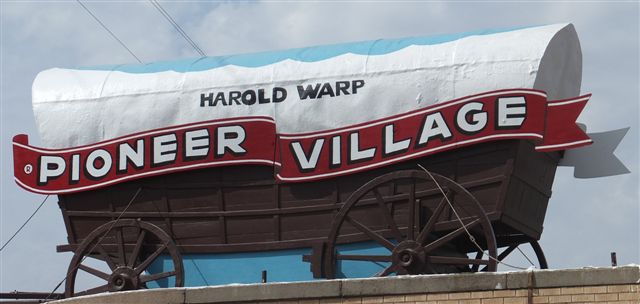 |
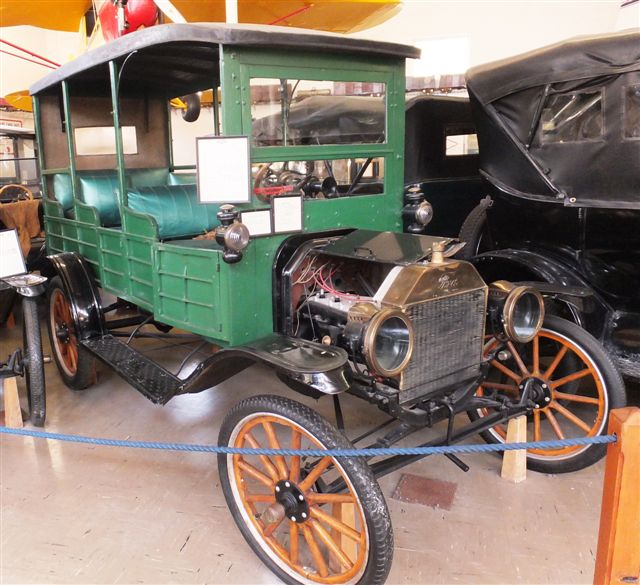 |
This is one of the oldest Fords in existence, dating from 1903. Harold was a
collector and the village contains a superb collection of American cars. |
| Not all early cars were
petrol driven. This is a 1909 Stanley Steamer. One was once driven from LA
to New York on $4.50 of fuel oil. Another held the speed record of 197mph
from 1906 to 1927. | 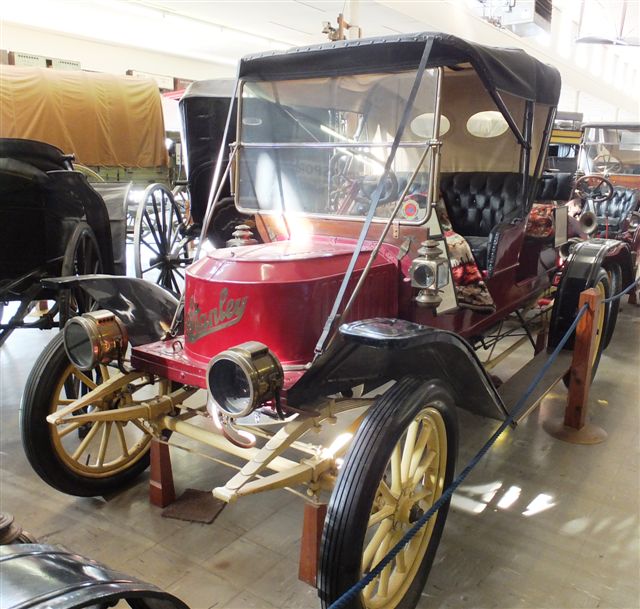 |
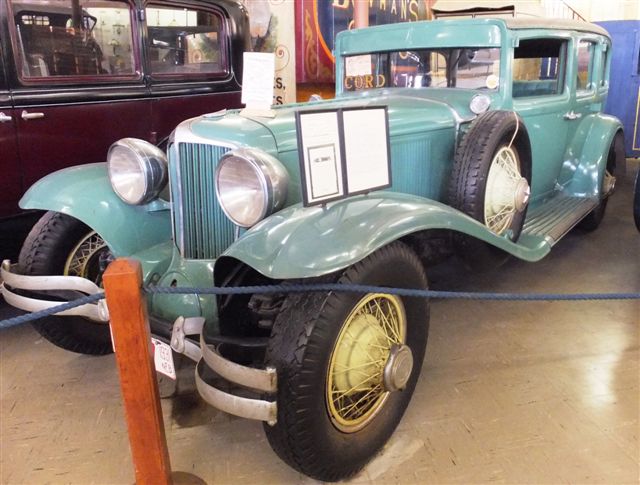 |
This is a 1931 L29 Cord. They once were front runners at Indianapolis. E L
Cord made Auburn, Duesenberg and Cord cars until 1937. After his family was
threatened, he ceased production and became a recluse. |
| Another collection is of
rifles and bullets. Not as many as in some collections, but still
significant and of interest to many Americans. | 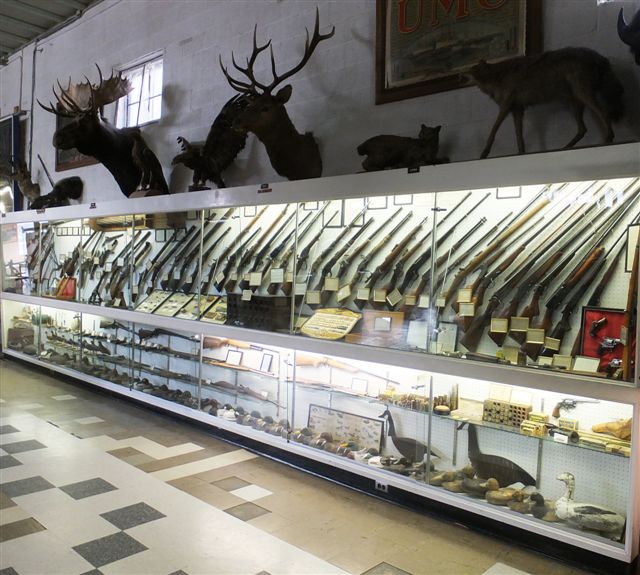 |
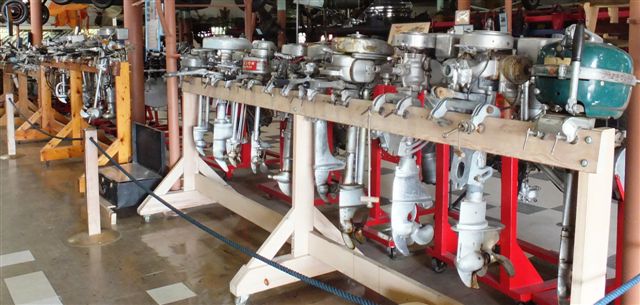 |
There are all sorts of collections of everyday things like this collection
of outboard motors. Collecting collections seems to be a peculiarly American
pastime. |
| There are stuffed birds
including this colourful specimen of a scarlet tanager. | 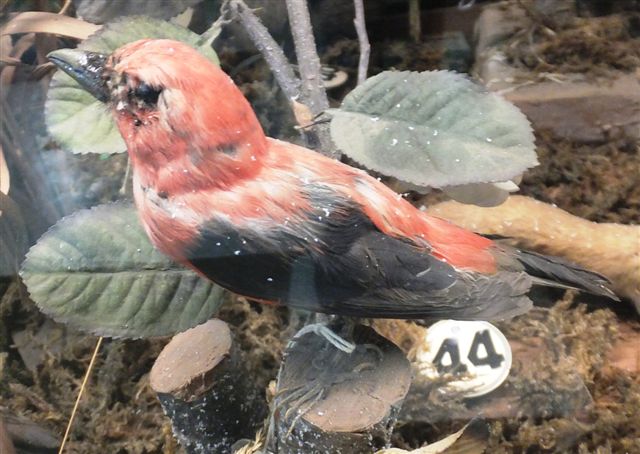 |
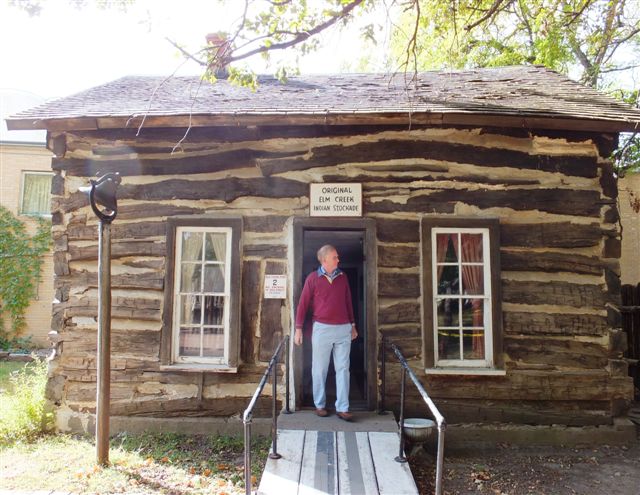 |
He originally started by collecting buildings which he bought and had moved
to this site. |
| This was a store and the
inside is still full of all the things which would have been sold in it when
it was in daily use. | 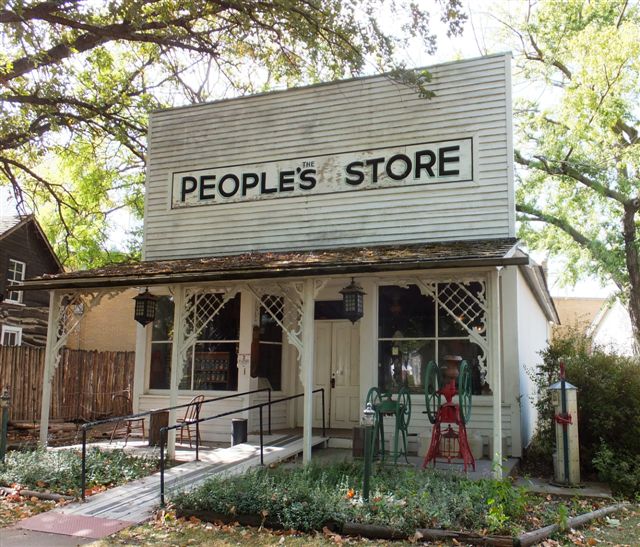 |
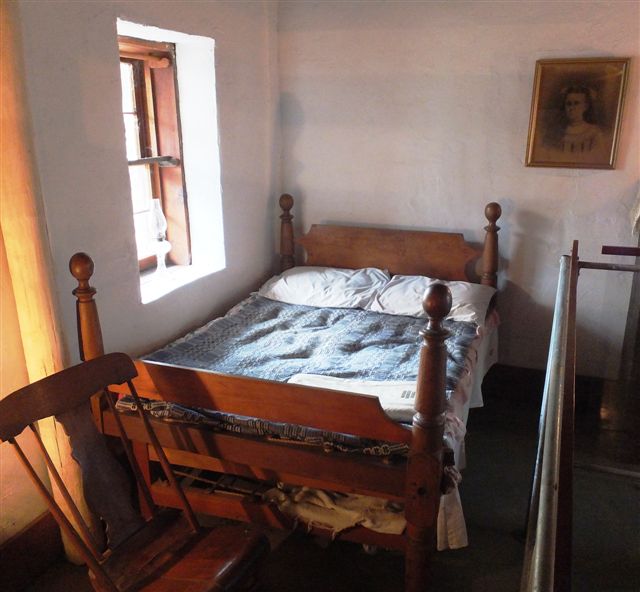 |
One of the houses is furnished just as it was in the late 1800s. |
| In the main living room
is a sewing machine. Elsewhere there is a large collection of similar
machines. | 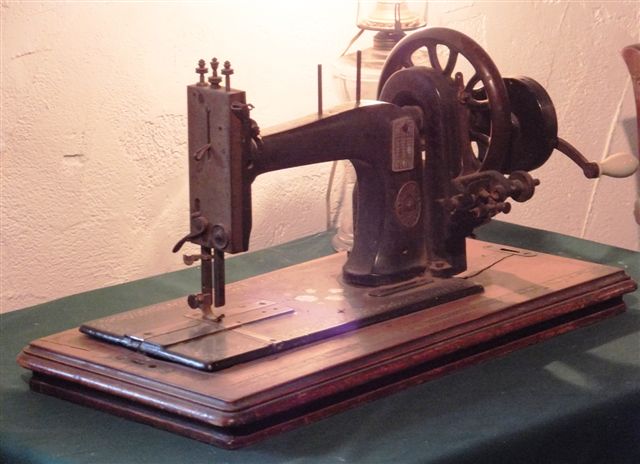 |
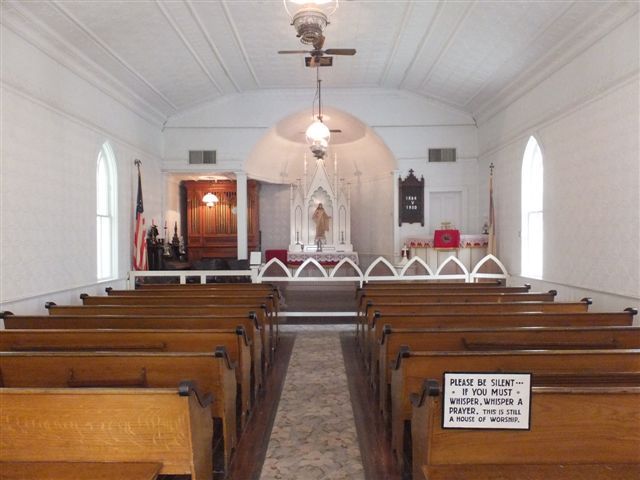 |
There is a small church, an important part of any village. |
| Many of the folk who came
out here brought musical instruments with them including pianos. Here we
have a cello and a harp. Many of the women were accomplished musicians. | 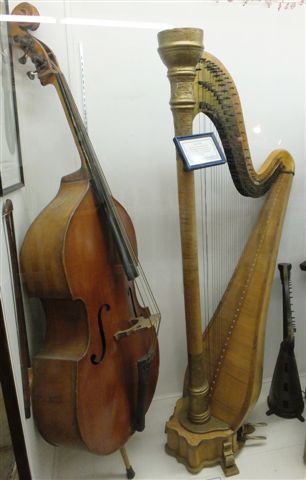 |
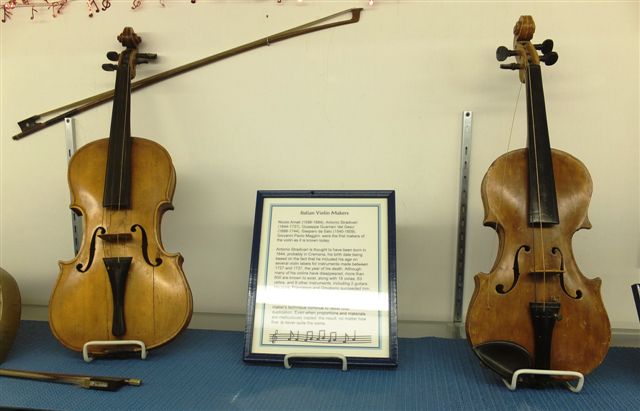 |
Two violins both thought to have been made by Stradivarius but certainly
Italian and of that vintage. |
| A loom. Most were made in
the US because the original makers would not export them. There is normally
a craftswoman who demonstrates on this machine in attendance but she wasn't
there today. | 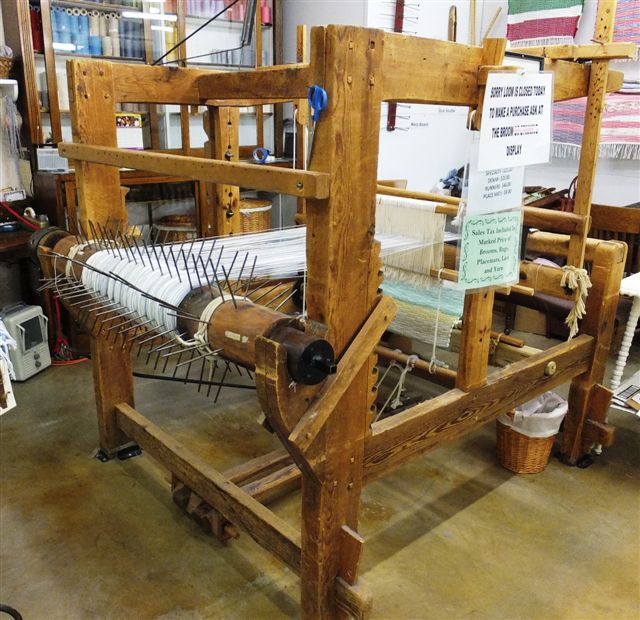 |
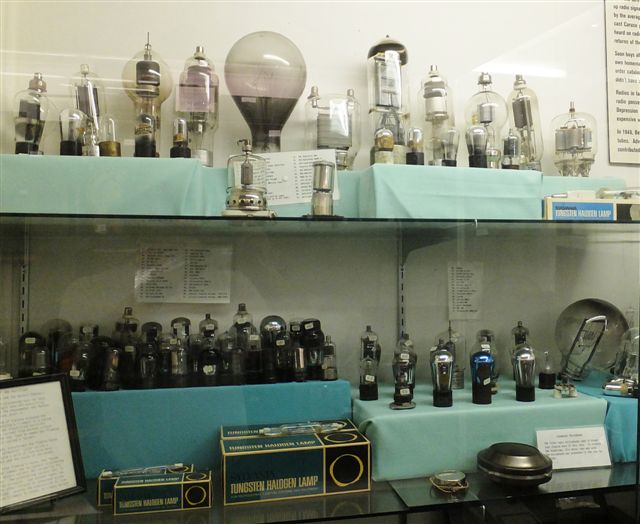 |
A collection of radio valves from a bygone era. There are also dozens of ham
radio sets. |
| A number of shop settings
are on display showing the contents from the early 1900s. This is a
pharmacy. | 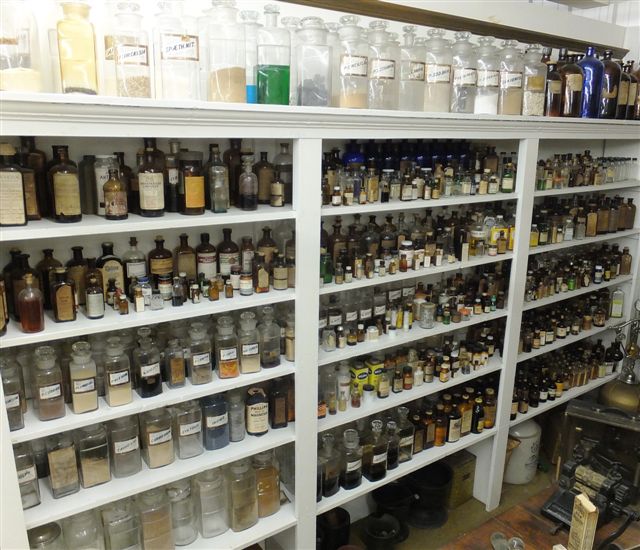 |
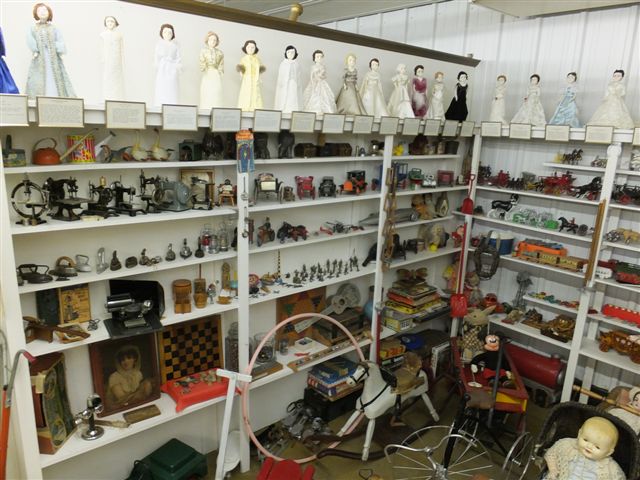 |
And this is a toy shop with a major collection of dolls. |
| Next door is the
clockmaker with a variety of old clocks which today are worth a fortune. | 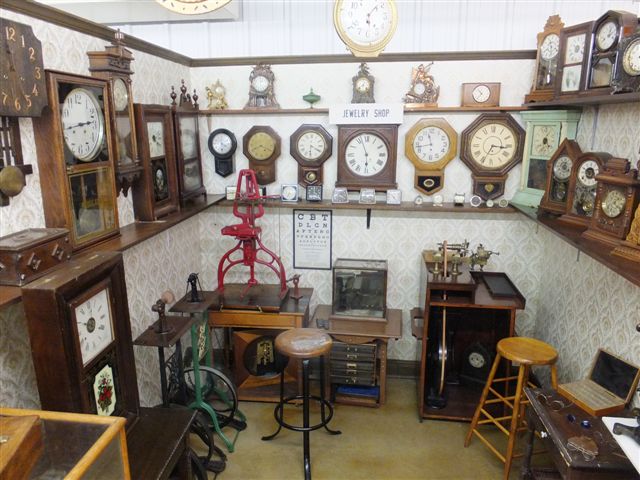 |
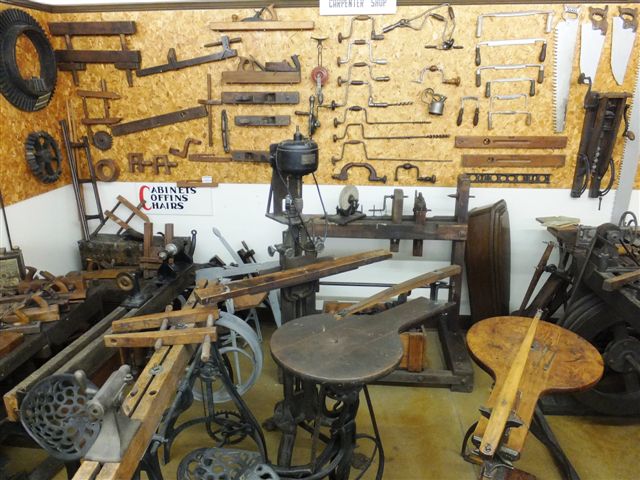 |
A carpenter's shop showing all the old tools they would have used, with a
blacksmith and a cooper next door. |
| Harold made his money in
Chicago where he developed an early plastic film (Flexoglass) which was used
for windows and many other uses. This was one of his production machines. | 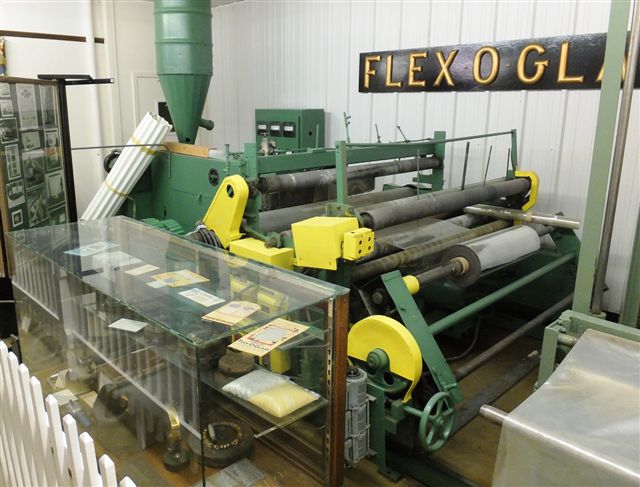 |
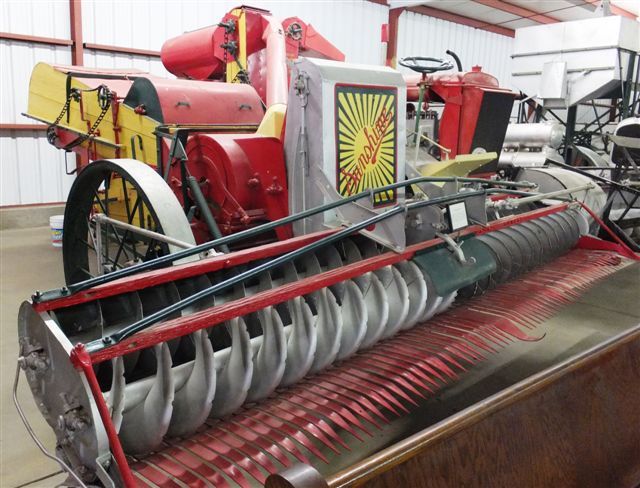 |
The collection of farm machinery is huge with dozens of combine harvesters
and hundreds of tractors and other items too numerous to count. |
| One of the more bizarre
collections is that of barbed wire - which tamed the west! | 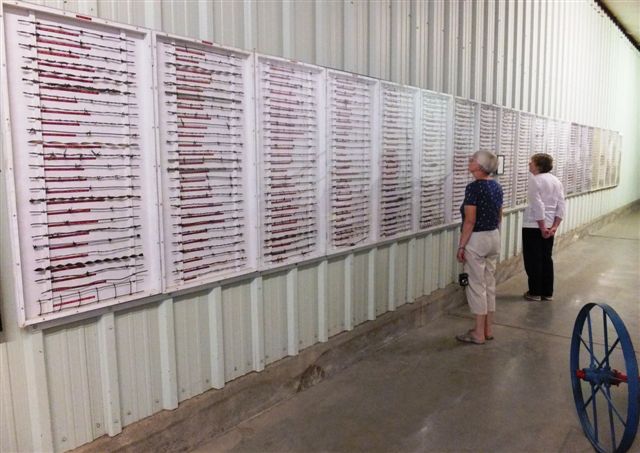 |
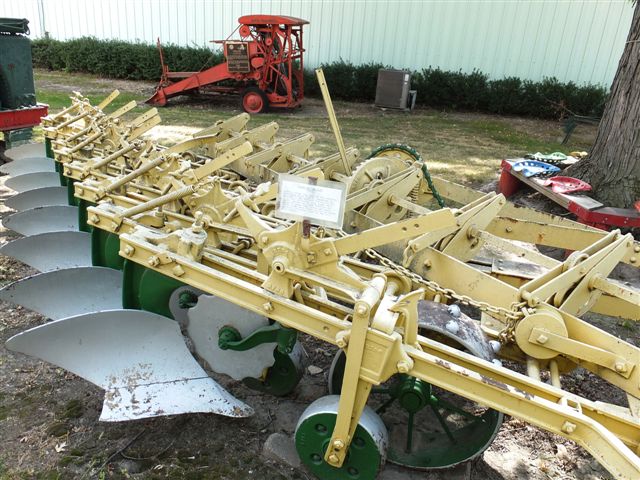 |
The fields are large and flat so tools like this eight bladed plough an be
used. The tractors to pull machinery like this have to be tremendously
powerful. |
| One of several sheds of
tractors and each shed has two floors. There are dozens of makes. Harold
knew what he had but today they have no catalogue and seem to have little
idea of what all this is worth. | 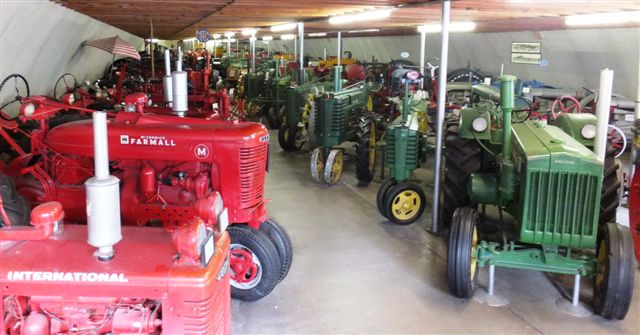 |
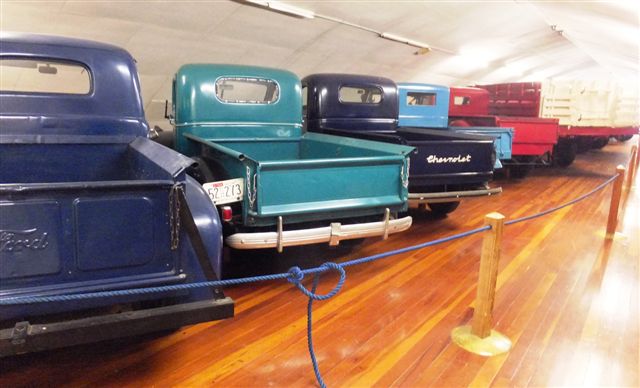 |
A collection of old pickup trucks, a ubiquitous vehicle which seems to be
owned by most American families, certainly in the centre of the country. |
a tiny village just south of the interstate in deepest Nebraska. It is the
home of the Harold Warp Pioneer Museum. |  |